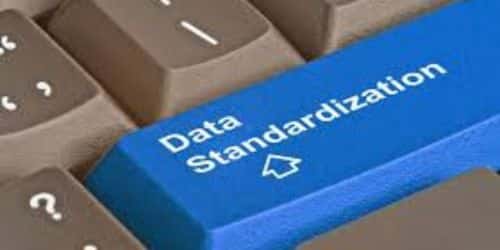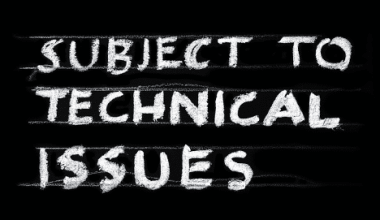Businesses rely on operations that are effective, and one of the most crucial components is preserving structured data across several systems. It might be difficult to standardize data across divisions in your business or across a whole organization. The truth is that every department has access to the information they require to complete their tasks without having to worry about learning new formats, and data integrity problems can be avoided when there are clear, consistent data standards in place. This post will explain how data standardization is currently carried out in the healthcare sector, its best practices, and why it is important to modern business.
Data Standardization
Data standardization transforms data into a format that is recognized and understood by computers. This is significant because it enables data sharing and efficient data utilization among various systems. It would be difficult for various ways to communicate and exchange information without data standards. The preservation of data quality also depends on data standardization. It is considerably simpler to spot problems and ensure that data is reliable when it is standardized. Making sure decision-makers have access to accurate and trustworthy information is crucial.
In general, standardizing data is essential to ensuring that information is accessible and usable. We wouldn’t be able to efficiently use and manage data without it.
Data Standardization in Healthcare
Data standardization is methods, protocols, terminologies, and specifications for the gathering, exchanging, storing, and retrieval of information related to healthcare applications, such as medical records, medications, radiological images, payment and reimbursement, medical devices and monitoring systems, and administrative procedures. This definition includes data standardization in the context of healthcare.
Take the following steps for data standardization in the healthcare sector:
- Definition of data standardization elements choosing the information to be gathered and shared in the healthcare sector.
- Standard formats for electronically recording the data pieces, including sequencing and error handling, are known as data interchange formats. Information models that specify the connections between data items in a message and document architectures for structuring data elements as they are transmitted are further examples of exchange standards.
- Data items are described, categorized, and coded using terminologies—medical terminology and concepts—as well as data expression languages and syntax that characterize the connections between the terms and concepts.
- Standard techniques for electronically representing medical literature, clinical recommendations, and similar information for decision support.
Data Standardization Best Practices
There are a few different practices to standardization of your data, but consistency in how your data is formatted is important. Prior to choosing any data standardization approach, it is crucial to be aware of the following practices:
#1. Determine Your Requirement
Businesses generate a lot of data, so standardizing that data is essential to making good use of it. Look at the different sorts of data you have and how they are currently arranged first. Is everything in one spot? Exists a range of formats? Is it current and accurate? You can begin to pinpoint places where standardization would be advantageous if you have a clear understanding of your present data situation.
Next, think about your company’s objectives and the choices you must make. What types of information would you require to reach those conclusions? Would standardization make it easier for you to access and analyze that data?
#2. Analyze The Points of Data Entry
When assessing data entry points throughout the data standardization process, a number of things need to be identified. It is beneficial to initially identify all potential data entry sites and assess their viability in order to streamline the procedure.
When evaluating data entry points, some things to keep in mind are:
- The data source: Is the information trustworthy and correct?
- How readily can the data be transformed into the necessary format?
- How much data is there, and is it manageable?
- The data entry points: Are they simple to use and well-defined?
By keeping these things in mind, you can streamline the data standardization procedure and guarantee the highest level of data quality.
#3. Define Data Standards
Setting guidelines for the organization and formatting of data is essential when working with it. By doing this, you can make sure that everyone in your company operates under the same presumptions and that data can be easily shared between various systems and departments. Data standards are regulations or standards that specify how to arrange and format data. You can make sure that your data is consistent and simple to use by setting data standards. You must choose the format in which your data should be stored. Text, numbers, dates, and other types of data can all be formatted as data.
#4. Clean Your Data
Cleaning your data is one of the crucial phases of data standardization. This entails eliminating any duplicate, inaccurate, or invalid data points. Data that is entered in an invalid field does not match the field’s requirements. A phone number field, for instance, should only contain numbers and maybe a dash or parenthesis. Any further characters would be invalid in that field. Inaccurate data does not correctly reflect what it should signify. For instance, a person’s first name might appear in a space that is supposed to carry their last name. Data that is identical to another data point in the same dataset is referred to as duplicate data.
Data normalization can start when your data have been cleaned. This entails establishing uniform guidelines for the entry and encoding of data.
#5. Apply Your Data With a Data Automation Platform
There are many different formats and types of data that you might come across. This can make it difficult to evaluate and interpret all the data. Data can be standardized in order to make it simpler to work with, though. Using a data automation platform is one way to accomplish this.
Your data can be normalized so that it is all in the same format with the use of data automation software. This can make working with and analyzing it much simpler. A data automation platform can be used to standardize data types as well. By doing this, you can make sure that all of your data is in the same format, which will make working with it much simpler.
Why Is Data Standardization Important
Every system has a unique set of constraints, which produces distinct data models and their definitions. Because of this, you might need to alter data before any business process can use it properly. Typically, the following are some importance of data standardization:
#1. Make Incoming or Exiting Data Match
There are numerous interfaces within an organization where data points from partners or vendors that are external stakeholders are exchanged. It is essential to conform data to the requisite standard whenever it enters or leaves an enterprise; otherwise, the unstandardized data jumble only becomes worse.
#2. Get Data Ready for BI or Analytics.
The same data can be represented in various ways, but most BI systems are not designed to handle every potential way that data values might be represented, which could lead to inconsistent treatment of data with the same meaning. This may result in BI results that are skewed or erroneous. As a result, in order to obtain accurate, worthwhile insights, data must first be cleansed, standardized, and deduplicated before being fed into BI systems.
#3. Merge Entities to Get Rid of Duplication
One of the largest risks to data quality that businesses face is data duplication. Eliminating duplicate records for the same item (whether a customer, product, location, or employee) is necessary for productive and error-free company operations, and an efficient data deduplication process necessitates that you adhere to data quality standards.
#4. Distribute Data Among Departments
Data must be presented in a way that is clear to everyone if it is to be shared between departments. Most businesses have customer information in CRMs that the sales and marketing staff can understand. This may cause delays in task completion and productivity barriers for the team.
Data Standardization vs Normalization
Machine learning frequently uses data pretreatment techniques of normalization and standardization. Both approaches can be helpful in certain circumstances and each has its own distinct advantages.
The process of normalization is used to scale numerical data within a certain range. When the feature variables have multiple units of measurement and we want to put them all on the same scale, this method is helpful. We can use normalization to bring height and weight data on the same scale, for instance, if height is measured in centimeters and weight in kilos. The data is scaled by normalization between 0 and 1, where 0 is the least value and 1 is the greatest value.
Another method for scaling numerical data is standardization. With this method, the data is modified to have a unit variance and a zero mean. When there are outliers in the data and we wish to reduce their impact, this strategy is helpful. Data that has undergone standardization is scaled to have a mean of 0 and a standard deviation of 1.
The size of the data is the primary distinction between normalization and standardization. While standardization scales the data to have a mean of 0 and a standard deviation of 1, normalization scales the data between 0 and 1. Standardization is typically used to eliminate the impact of outliers from the data whereas normalization is typically used to scale up all features.
What Are the Steps for Data Standardization?
The four easy steps of a data standardization process are defined, tested, transform, and retested.
What Are the 4 Types of Standardization?
There are at least four stages of standardization: reference, commonality, interchangeability, and compatibility.
What Are the Basic Principles of Standardization?
The following are the objectives of standardization: to fit a product, process, or service for its intended use; to control variety by employing the ideal number of types or sizes; to ensure compatibility of varied products; to provide health, safety, and environmental protection; etc. Consensus is the fundamental tenet of standardization.
What Are Methods of Standardization?
In epidemiological investigations, there are two standardization techniques that can be distinguished by whether a population distribution is used as the standard (direct method) or a set of specific rates is used as the standard (indirect approach).
What Is a Simple Example of Standardization?
The Generally Accepted Accounting Principles (GAAP) that businesses must adhere to while producing or reporting their yearly financial statements is one example of standardization.
What Are the 4 Key Elements of Standardized Work?
Takt time, line balancing, work sequence, and standard in-process stock are the four basic components of standardized work.
Related Posts
- MRR: What Is MRR (Monthly Recurring Revenue)?
- BUSINESS INTELLIGENCE TOOLS: Meaning, Best Tools, And Guide
- REQUISITION NUMBER: Definition & How it Works
- The Product Life Cycle Theory: Guide to the Stages & Examples
- IMPLEMENTATION SPECIALIST: What Is It & What Do They Do?
- WHAT IS CHIEF PEOPLE OFFICER? Definition & How to Become One
- SENIOR PRODUCT MANAGER: What They Do & How Do You Become One?






